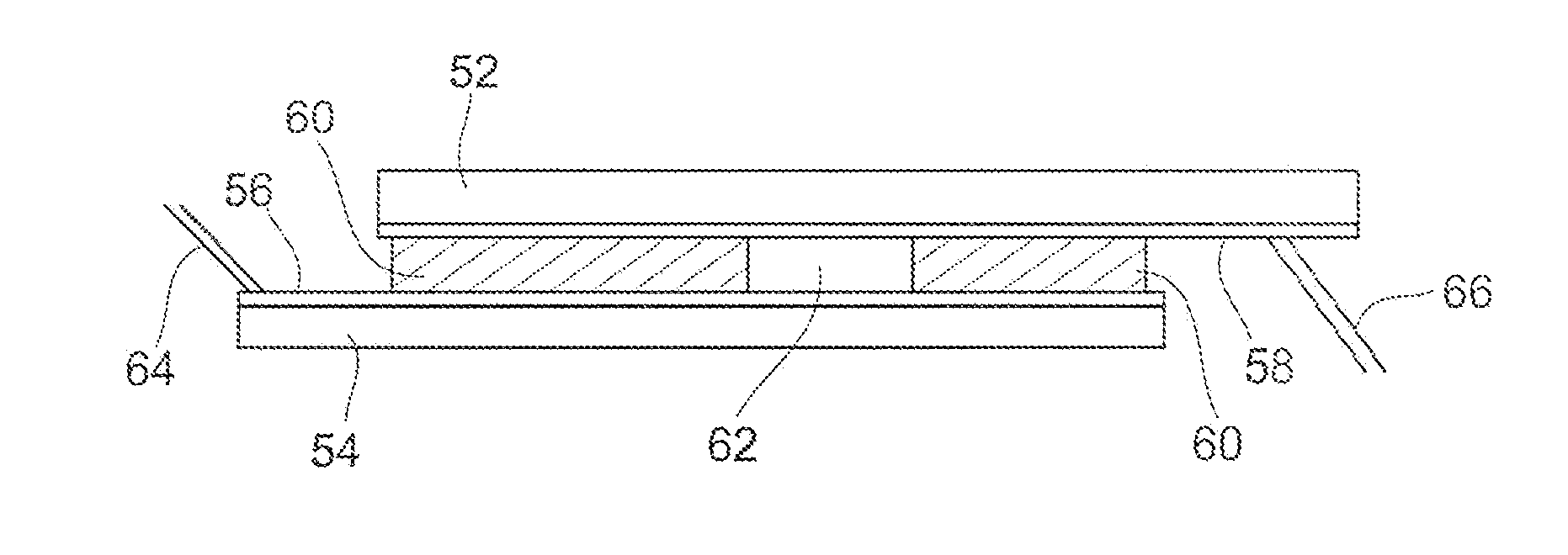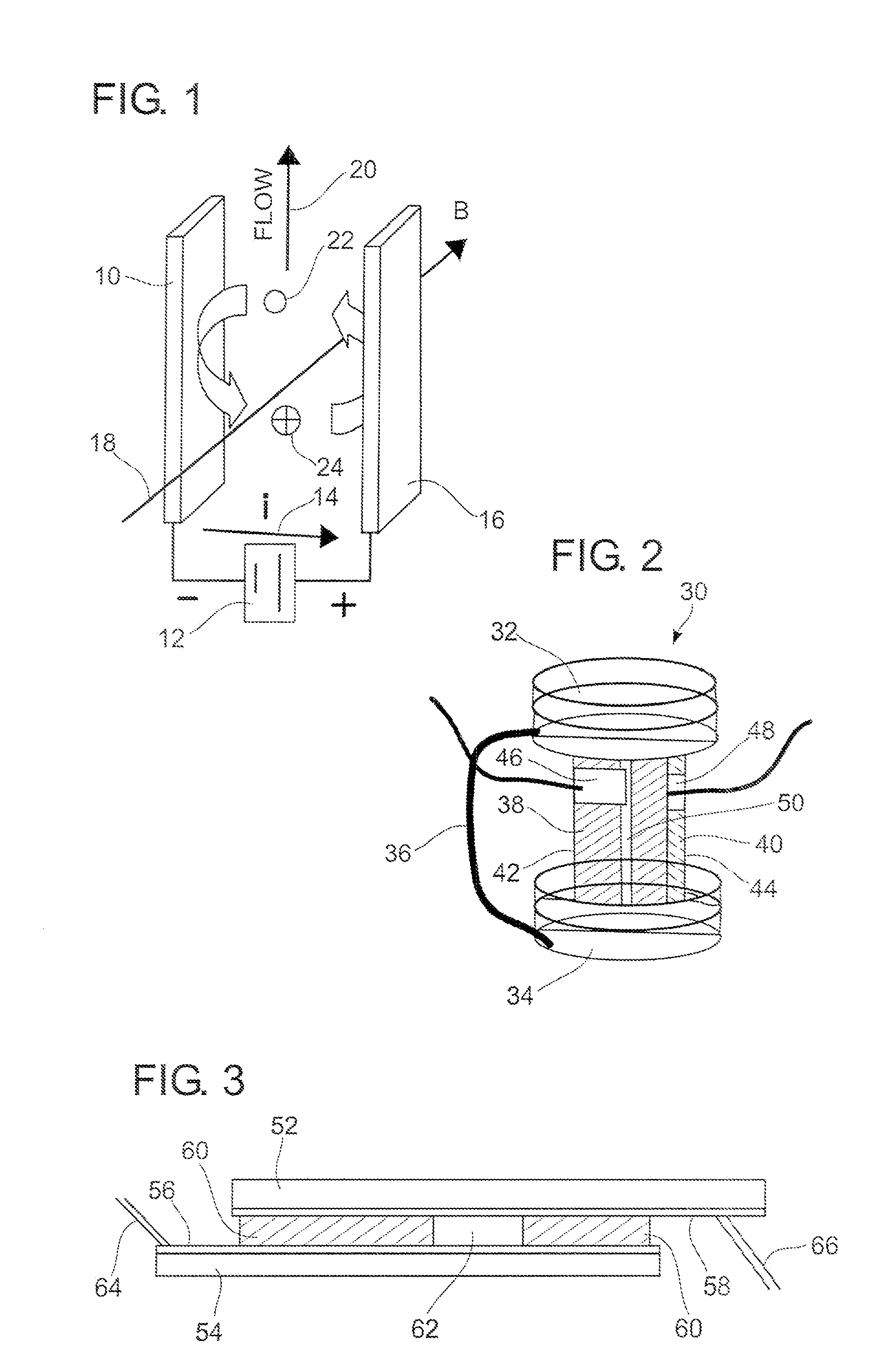Microfluidic device utilizing magnetohydrodynamics and method for fabrication thereof
a microfluidic device and magnetohydrodynamic technology, applied in the direction of positive displacement liquid engines, laboratory glassware, inking apparatus, etc., can solve the problems of diffusion predominance, difficult mixing with extremely small volumes, and small samples that pose challenging problems in analyzing their content, etc., to achieve constant magnetic fields, easy reversible pumping methods, and small volum
- Summary
- Abstract
- Description
- Claims
- Application Information
AI Technical Summary
Benefits of technology
Problems solved by technology
Method used
Image
Examples
Embodiment Construction
[0059] The embodiments discussed herein are merely illustrative of specific manners in which to make and use the invention and are not to be interpreted as limiting the scope of the instant invention.
[0060] While the invention has been described with a certain degree of particularity, it is to be noted that many modifications may be made in the details of the invention's construction and the arrangement of its components without departing from the spirit and scope of this disclosure. It is understood that the invention is not limited to the embodiments set forth herein for purposes of exemplification.
[0061] MHD Lorentz forces have been known to physicists for almost 200 years. It involves 3 physical fields all perpendicular to one another. The flow or velocity field is aligned perpendicular to both the magnetic and electric fields which are also perpendicular to one another. Manipulation of any two of these fields results in a change in the third one. In the present invention, an ...
PUM
| Property | Measurement | Unit |
|---|---|---|
| width | aaaaa | aaaaa |
| width | aaaaa | aaaaa |
| width | aaaaa | aaaaa |
Abstract
Description
Claims
Application Information
 Login to View More
Login to View More - R&D
- Intellectual Property
- Life Sciences
- Materials
- Tech Scout
- Unparalleled Data Quality
- Higher Quality Content
- 60% Fewer Hallucinations
Browse by: Latest US Patents, China's latest patents, Technical Efficacy Thesaurus, Application Domain, Technology Topic, Popular Technical Reports.
© 2025 PatSnap. All rights reserved.Legal|Privacy policy|Modern Slavery Act Transparency Statement|Sitemap|About US| Contact US: help@patsnap.com



